6 Mediterranean islands and their LGBTQI+ history
A queer history lesson for the Mediterranean SeaMany of the Mediterranean islands have important queer stories to tell, spanning over decades and even centuries. Before you visit one of the famous LGBTQI+ destinations in the Mediterranean, a first introduction to their queer roots is long due.
Don’t know where to start? No worries. Discover the LGBTQI+ history of 6 Mediterranean islands on Ferryhopper, including their queer past and modern venues to visit. Find the best queer travel recommendations and book your ferry tickets to the islands of Greece, Italy and Spain online!
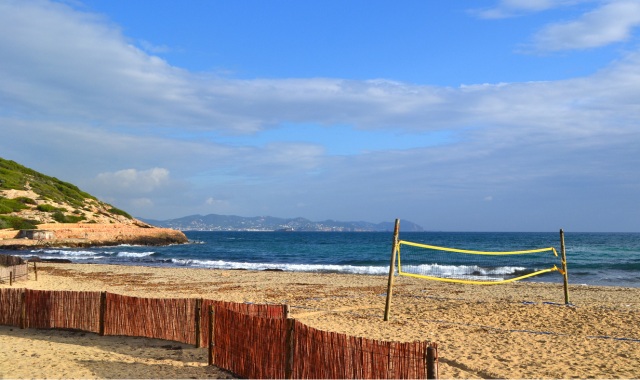
The famous queer-friendly beach of Es Cavallet in Ibiza
The poetic beauty of Lesbos
Our first trip is to the famous island of Lesbos in the northeastern Aegean Sea, Greece. Specifically, our focus will be on Skala Eressos, the alleged birthplace of the great poet Sappho.
Known for her timeless poems about lesbian love, Sappho was often referred to as the "Tenth Muse". The English words “sapphic” and “lesbian” even derive from her name and birthplace, respectively.
It is evident that Sappho’s legacy still shines to this very day, with myriads of LGBTQI+ tourists visiting her birthplace in the last few decades. One key highlight is the 10-day International Eressos Women’s Festival, with cultural activities, workshops and partying! It's one of the most reputable LGBTQI+ activities in the Greek islands.
During your visit to Sappho’s town, make sure to stop at the lesbian-owned Flamingo Beach Bar, with its many colors and sea views! And when searching for a swimming spot, the clothing-optional beaches of Skala Eressos and Eftalou are rather popular among queer couples.
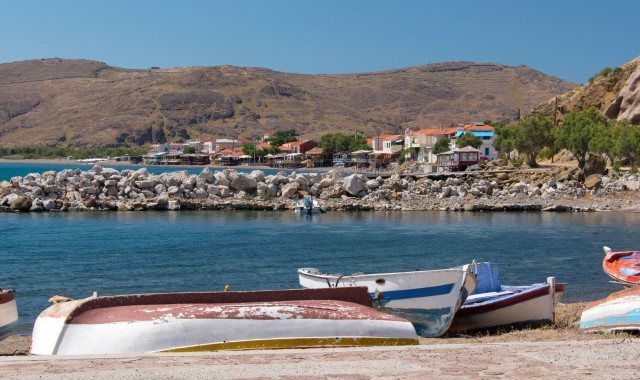
Quaint views in Skala Eressos of Lesbos
Mykonos: no introduction is needed
In the 20th century, the Cycladic island of Mykonos slowly became a touristic force to be reckoned with. The landscapes of Mykonos changed drastically from one decade to the next, earning its reputation as a queer-friendly destination little by little.
In the 1970s, the iconic cocktail restaurant bar Pierros was the gay hotspot of Mykonos, featuring drag shows and opening its doors to everyone. Today, however, it is permanently closed.
At the same time, celebrities and public figures of all kinds from Europe and the US began visiting the island, adding their touch of elegance and artistry to Mykonos’ nightlife and entertainment scene. Subsequently, many forward-thinking and queer-friendly venues started popping up, attracting LGBTQI+ tourists.
When planning queer holidays to the Greek islands, you shouldn’t miss out on Mykonos’ nightlife, with places like The Piano Bar, Jackie O’s, Babylon and Kastro Bar. And to reach the heights of Mykonos’ party scene, check out the annual XLSIOR festival, founded in 2009!
Last but certainly not least, Mykonos has numerous gay-friendly beaches up its sleeve, perfect for couples and groups of LGBTQI+ travelers. Some indicative options are the famous Super Paradise Beach and Elia Beach.
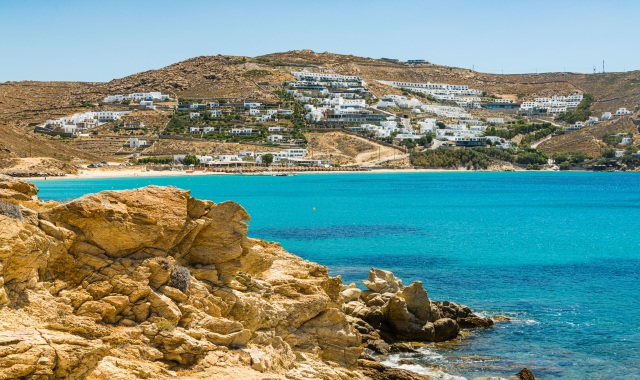
Approaching the stunning beach of Elia in Mykonos
The picture-perfect paradise of Taormina, Sicily
There’s more to Sicily’s queer history than what the second season of The White Lotus cleverly alludes to. From the 19th century, the town of Taormina, with its artistic atmosphere, became a tourist magnet for queer men and women. Its historic center was often occupied by queer foreigners, whose influence expanded to other Sicilian towns as well, such as Palermo.
One of the driving forces behind Taormina’s queer popularity was the German Baron Wilhelm von Gloeden. Through his tender photographs of local men, Sicily was viewed by tourists as an LGBTQI+ getaway destination.
Another case is the Russian poet Sophia Parnok, known for her lesbian stories. In the early 1900s, specifically, she came to the island along with many noblewomen in pursuit of love and happiness.
Today, there are limited LGBTQI+ venues in Taormina, such as the bar Shatulle, known for its queer paintings and fantastic cocktails. You can also find a few gay-friendly hotels when looking for accommodation.

The theme song of The White Lotus playing in the background
Rainbows over Capri
“Rainbow gelato in the street, Renaissance, yachtin’ in Capri”, as the great Beyoncé once said.
Not only is Capri renowned for its elegant and cosmopolitan aura, but it has also been a European gay hotspot since the 20th century. Many queer foreigners, especially writers and poets, chased their dreams on this Italian island. Oscar Wilde, for example, stayed with his lover at Hotel Quisisana for one night, which is still in operation today!
Some famous architectural highlights of Capri even derive from queer stories. A key example is the Villa Lysis, a palazzo named after Plato’s dialogue of the same name, which refers to a gay story in Classical Athens.
While many of the queer stories down the history of Capri were not whole-heartedly welcomed, the island became a symbol of hope and new beginnings for numerous foreigners. Today, their traces can still be found on its cosmopolitan premises, from the iconic Gardens of August to its queer-friendly nightclubs!
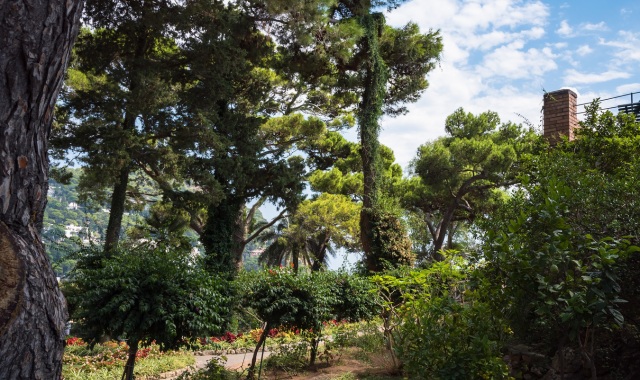
Strolling through the evergreen Gardens of Augustus
The two sides of San Domino
San Domino and its (recent) queer history remain relatively unacknowledged. In the late 1930s, back when homosexuality was severely frowned upon in Italy, around 45 men from Catania, Sicily, were believed to be gay. As punishment, they were sent as exiles to San Domino, part of the Tremiti Islands in the Adriatic Sea.
Living under an oppressive prison regime, many of the queer men destined to stay in San Domino created a sense of community between them. Romance, theater and dressing in drag were some of the few things they openly participated in. When this state of internal exile ended after roughly 1 year, many of the prisoners wept, as they had to abandon their community.
Today, several plaques have been set up on the island by LGBTQI+ activists in memory of the exiled men and as a reminder of the constant battle against discrimination.

Fragments of San Domino's untouched beauty
Unearthing Ibiza’s Colorfulness
In the 1960s, Barcelona, Stiges and the Balearic gem of Ibiza rose as hidden gay scenes. Ibiza, specifically, with its strong artistic heritage, evolved even further in the following decades, thanks to the countercultural movements of the hippies and La Movida Madrileña, with the latter strongly focusing on liberated sexual expression.
Today, the top-tier pride events and nightlife options of Ibiza are well-known across the globe, with many of the island’s venues, parties and even boat tours mesmerizing queer travelers and locals alike.
From the gay beach of Es Cavallet to the queer-friendly street of Calle de la Virgen, the island has countless options for you to uncover! A nocturnal highlight is the seasonal party of HE.SHE.THEY. at the famous club Amnesia, featuring fantastic drag performers.
As for your accommodation, Ibiza is home to several LGBTQI+ friendly hotels, whether you’re looking for serenity and relaxation or non-stop partying. Among the most famous options is the Purple Hotel in San Antonio.
Tip: apart from the Balearics, there are also plenty of LGBTQI+ activities in the Canaries as well.
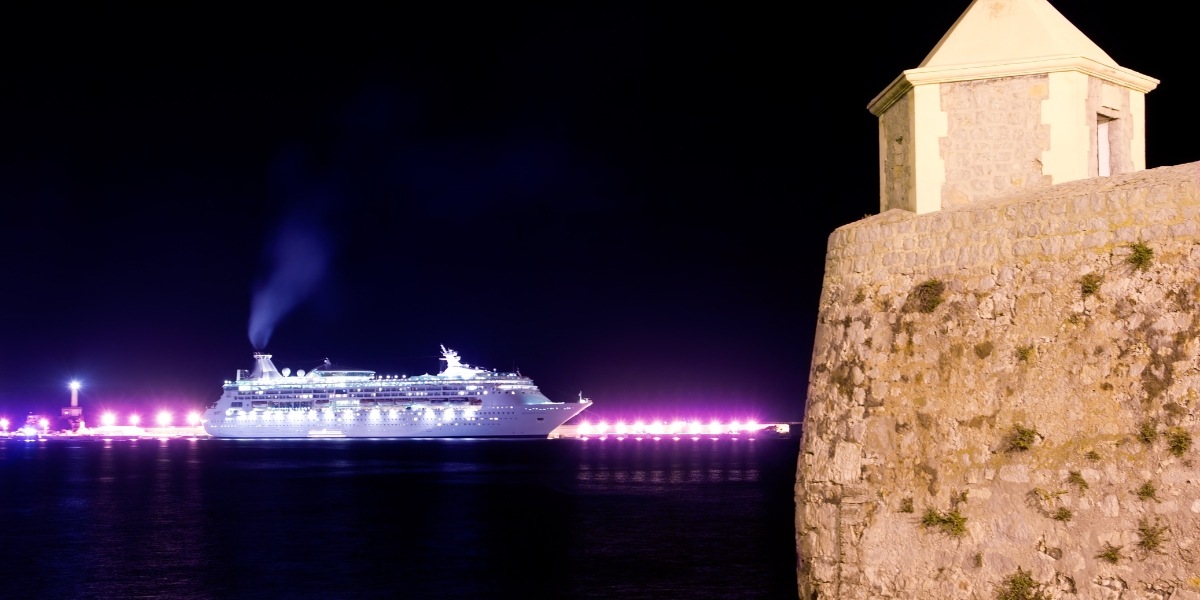
Partying along the coast of Ibiza
Book ferry tickets to the Mediterranean islands
Don’t go chasing rainbows anywhere else! The Mediterranean islands and their immense beauty and history await you. Browse all ferry connections on our interactive Map of ferries and plan the queer getaway of your dreams!